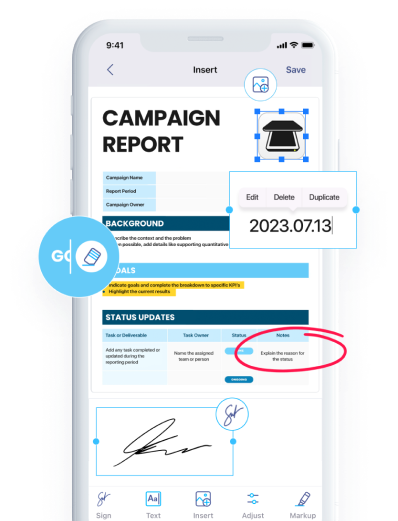

22 mar 2022
As digital tooling races along, constant improvement is crucial for any mobile app developer. But it’s just as crucial to understand that an improvement can only be perceived as such if it adds value for the customer.
This is why at iScanner, we have established a culture of customer centricity. We are a team of over 50 people of different backgrounds who live in different countries. We have different approaches to work, and sometimes we disagree with each other. But everyone is of one mind on this: customer experience is of the highest order.
Given that we’re putting our users in the center of the picture, we obviously love getting feedback from them. Customer input is a goldmine for our developers, a rich source of inspiration and insights into our users’ needs. But above all, user feedback is the ground on which we build mutual understanding, trust, and meaningful connections with our customers.
“It’s like getting extra sets of eyes that help you pinpoint things your team might have overlooked. Perception can be tricky when you’ve been on the project for a long time—you get blindspots. Being able to look from a very different perspective, our users quite often point out the things we haven’t thought of and help us stay laser focused on their needs,” says Matvei Svetlak, Group Product Manager of iScanner.
At the same time, grateful as we are for the trust and loyalty our users have for us, we always try to establish an authentic relationship with them. We use feedback to get a deep understanding and appreciation of customer needs on an individual level because for us, the customer is always beyond business. We want to be sure that our users can rely on us and that every voice is heard.
Not so long ago a student contacted our support team. He was operating on a very tight schedule trying to submit an assignment. He was stressed out by the pop-up ads which were interfering with his concentration and causing a delay with the submission. In-app advertising is quite common, as it’s an incredibly efficient marketing tool and, therefore, a great monetization strategy for the developers. But having received this student’s feedback, we had a chance to appreciate how much emotional discomfort in-app ads caused him. We realized that our users’ comfort is far more important for us, canceled third-party in-app ads altogether, and never looked back.
One of our most loyal, long-term customers once contacted the support team. He’d been using iScanner since 2016 and has over 6,000 scans in the app. This user’s complaint was that a recent update of the app had changed the placement of the buttons. Being such a heavy user of the app and having so many scans, he was extremely keen to have the buttons exactly where they always had been. We especially value feedback from the users who have been with us longest and interact with the app more than most, so we decided to fulfill his request.
Another case had to do with a promising feature we’ve developed—color autodetection. Once we’d implemented this feature, negative feedback from our users came rushing in. Against our expectations, the new feature did not enhance user experience. On the contrary, our users were no longer able to control the scanning process, which understandably annoyed them. This is a great example of an update not necessarily being an improvement.
“It should be noted that continuous development of an app will always cause minor bugs. Developers need to handle criticism well, and keep working on improving the product,” says Matvei Svetlak, Group Product Manager of iScanner.
Sometimes, we get feedback from users requesting a feature or an update that has already been implemented. That’s how we know that our UI/UX design might be falling short. We then look into the symptoms to identify the underlying issue and fix it.
Recent research shows that four out of five users, when asked why they give feedback, say that they enjoy sharing their opinion, like to feel that they can make a difference, and want to help the company to get better and succeed. What we want to say to our users is thank you and thank you again. You do make a difference, we welcome your feedback, and most importantly, we hear you!
